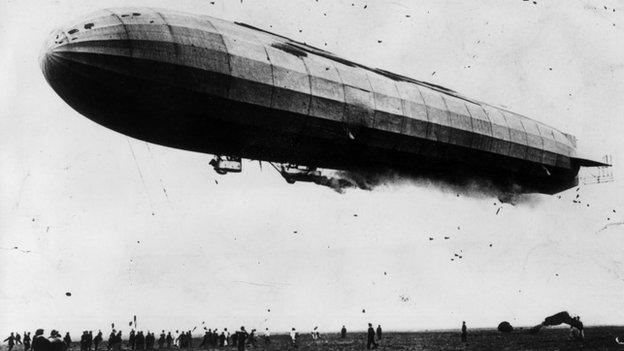WW1 VC pilot 'Reckless Rex' honoured with memorial
- Published
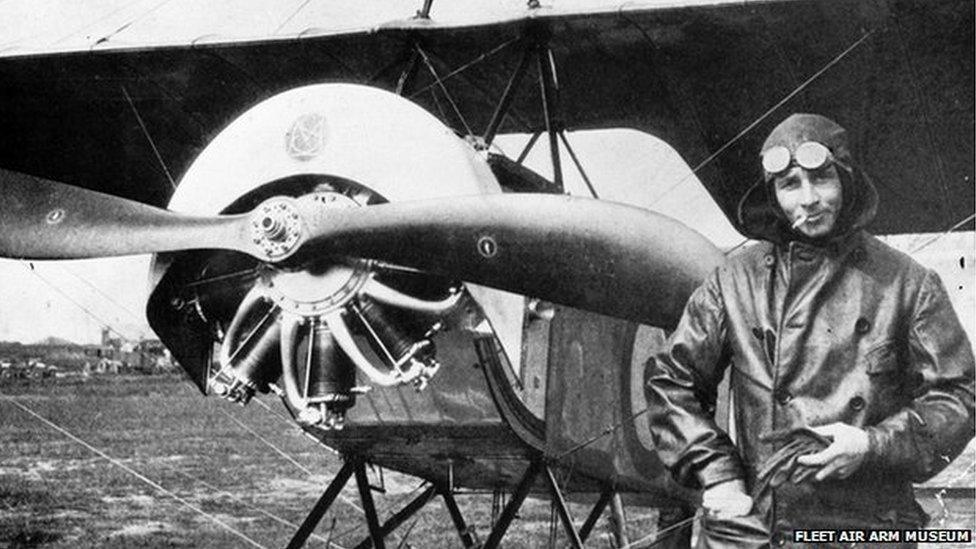
Flt Sub Lt Reginald Warneford was awarded the Victoria Cross for destroying a German Zeppelin
He was feted as a national hero after bringing down a German Zeppelin but just 10 days later, the "daredevil" World War One pilot nicknamed "Reckless Rex" was killed in a plane crash. Now, a century on, he is being honoured with a memorial in his adopted home town.
When news broke that a Royal Navy pilot had become the first airman to destroy a German Zeppelin in mid-air, it was a huge morale boost to a Britain in the grip of World War One.
The following day Flt Sub Lt Reginald Warneford, 23, was awarded the Victoria Cross (VC) for his bravery by King George V.
But just nine days after that he was killed in an air crash in France. Thousands of people lined the streets of London for his funeral.
Now, exactly 100 years on from his daring mission, a memorial flagstone is being laid in his honour in Exmouth, Devon, where he visited his mother's home.
Warneford was born in India and grew up shooting tigers and helping his father build railways in Darjeeling.
His nephew, James Corkery, said: "He had no formal education until the age of 13. He was very much a wild spirit and independent."
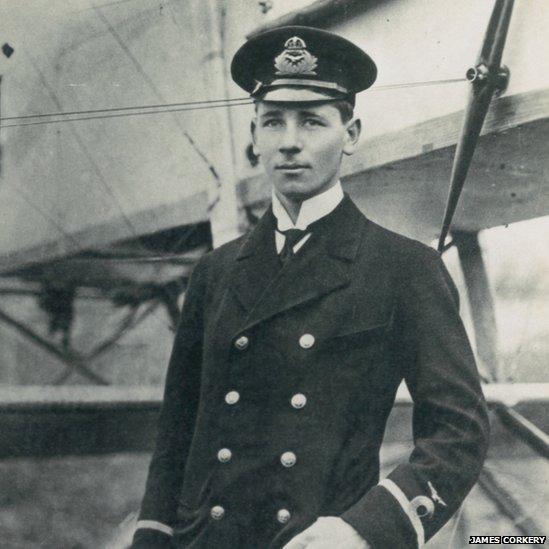
Warneford's nephew said he was a "wild spirit" after growing up building railways in India
Later he joined the Royal Naval Air Service and became a pilot, but did not mix well with his fellow officers.
"He was such a wild character nobody liked him because they thought he was incredibly cocky and an oddball," said Mr Corkery.
"The commanding officer said he'd either do great things or kill himself. He really was a daredevil and a one-off."
On 7 June 1915 Warneford carried out his most daring mission, becoming a hero overnight in Britain and France and earning the nickname "Reckless Rex".
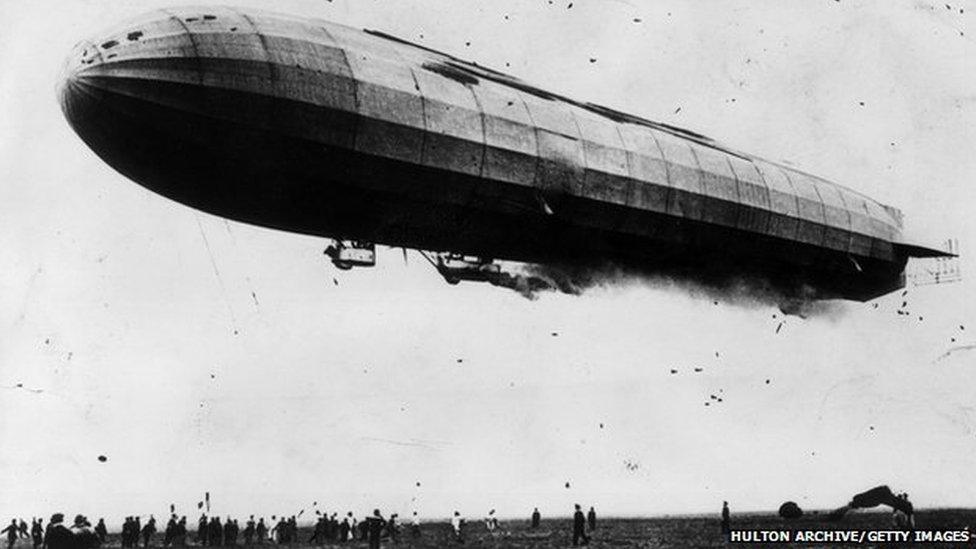
German Zeppelins, known as "baby-killers", were attacking British towns and cities
During a night-time flight over Belgium, he spotted the German Zeppelin LZ 37. Climbing to 11,000ft (3,353m), he then dived towards the airship and released his bombs at a height of about 200ft (61m).
The force of the subsequent explosion turned Warneford's aircraft upside down and ruptured its fuel pipe, forcing him to land behind enemy lines.
He managed to repair the aircraft in 15 minutes, evading German patrols, and returned to his base in Dunkirk despite thick fog.
The next day he was awarded the VC for "Most conspicuous bravery on 7 June 1915, when he attacked and, single-handed, completely destroyed a Zeppelin in mid-air."
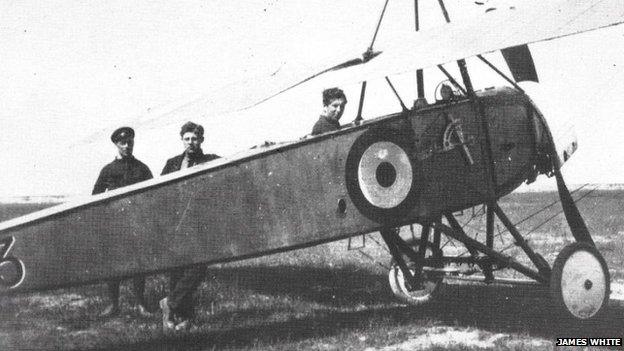
Warneford became a celebrity in Britain and France and was mobbed by fans in Paris
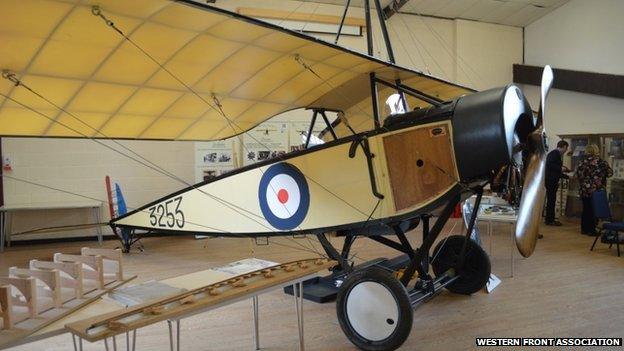
A replica of Warneford's Morane-Saulnier Type L (No. 3253) plane has been used in commemorations
The VC is the most prestigious award for gallantry in the face of the enemy that can be awarded to British forces. During World War One, 628 were won.
WWI military historian Ian Castle said: "People thought the Zeppelins were invincible but suddenly that all changed.
"Everyone was just so elated - it was a real game-changer. At the time it gave people hope, which was really important as there was a lot of bad news coming back from the home front."

Zeppelins
Filled with hydrogen, they were held together by a metal framework and travelled at about 85 mph (137km/h)
Could carry up to two tonnes of bombs and known as "baby-killers" after the first London bombing raid killed a three-year-old girl
Used by the Germans to bomb towns and cities in Britain, including Great Yarmouth and Ipswich
Between 1915 and 1918 they killed more than 500 people and injured more than 1,000 in places all down the east of the country
The British eventually found their Achilles heel: their hydrogen could be set alight with explosive bullets

Just 10 days after this famous mission Warneford travelled to Paris and was awarded the Légion d'Honneur by the French Army for his achievement.
After a celebratory lunch he took a new plane out on a test flight, but it crashed, throwing him from the aircraft.
He was taken to the British Military Hospital in the Trianon Palace Hotel at Versailles, but died shortly afterwards.
He was buried at Brompton Cemetery in London on 21 June 1915 in a ceremony attended by thousands of people.
When his death was announced "the whole nation went into mourning", according to Mr Castle.
"There was a huge outcry of sympathy because people wanted to recognise what he did for the country," he said.
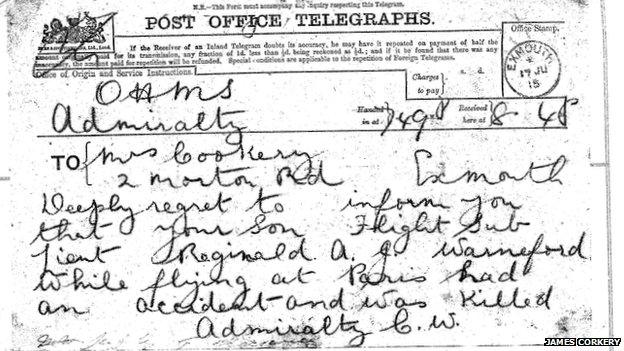
Telegrams of sympathy from around the Empire were sent to Warneford's mother after he died
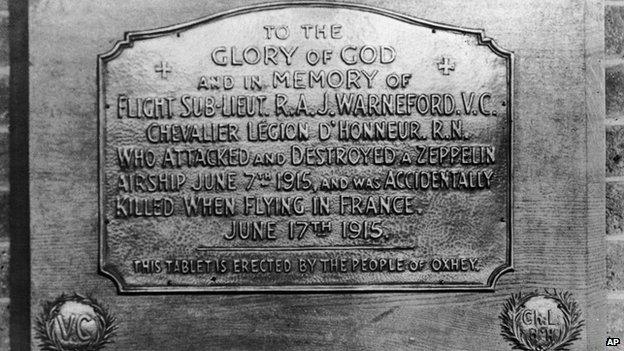
Thousands of people attended Warneford's funeral and a memorial was erected in Oxhey, Hertfordshire where his aunt lived
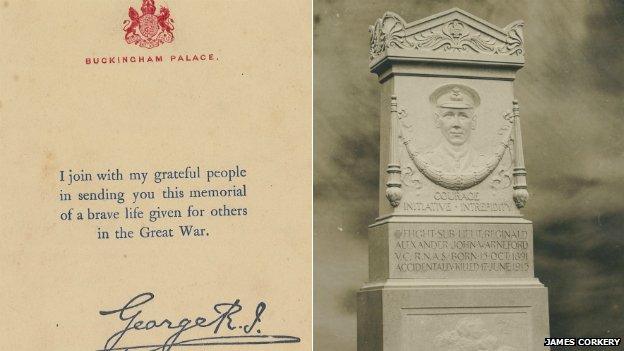
A wreath-laying ceremony will be held at Warneford's grave at Brompton Cemetery
Hundreds of telegrams of condolence were sent to Warneford's mother Alexandra Corkery in Exmouth, including one from Buckingham Palace offering the "most sincere and heartfelt sympathy in the terrible loss" for her "most gallant son".
Exmouth adopted Warneford as one of its own and the laying of a flagstone in the Strand Gardens in the town is just one a number of ceremonies being held in his memory, including a wreath-laying at Brompton Cemetery.
East Devon District Council chief executive Mark Williams said it was a "tremendous privilege" for Exmouth to be part of the commemoration.
Warneford's nephew Mr Corkery said: "I can't put the words to it; it is so important that Rex is remembered by Exmouth because of my grandmother who lost her son who did so much for our country."
- Published7 June 2015
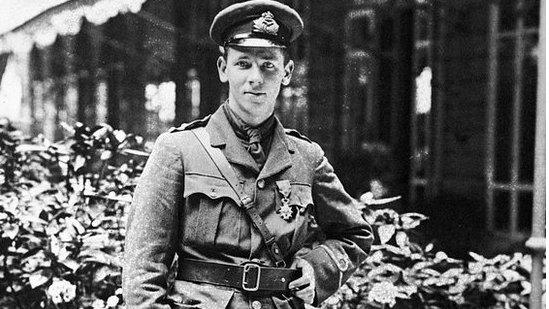
- Published16 April 2015
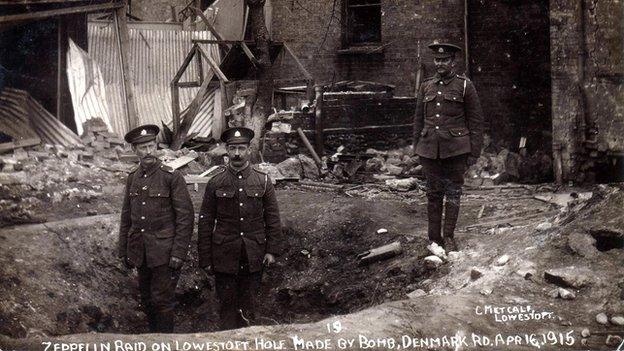
- Published11 February 2015
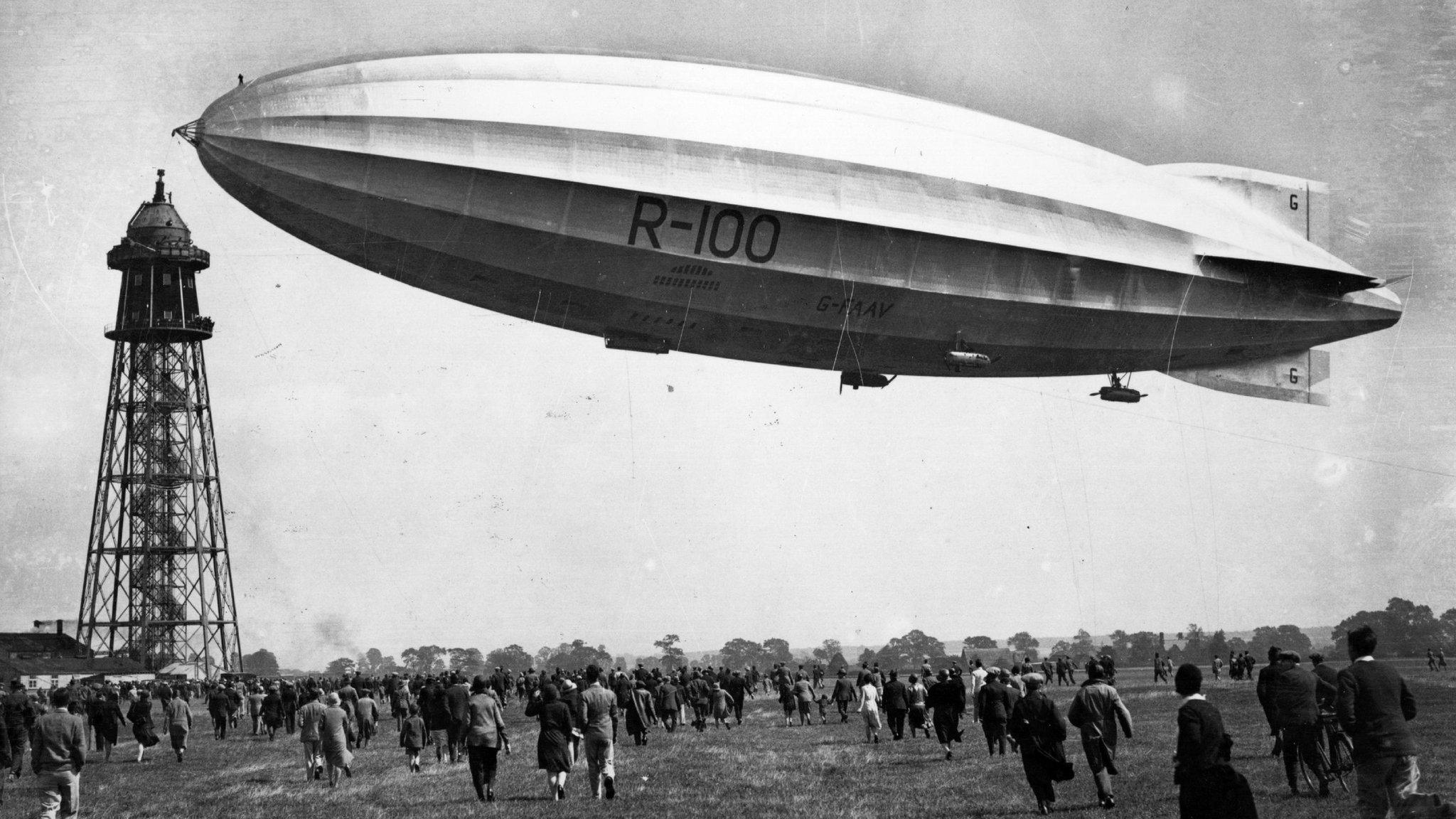
- Published19 January 2015
.jpg)
- Published4 August 2014
